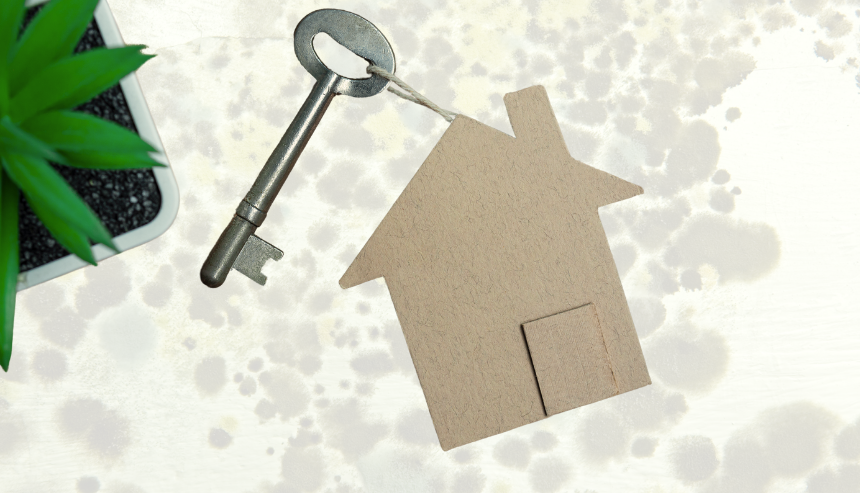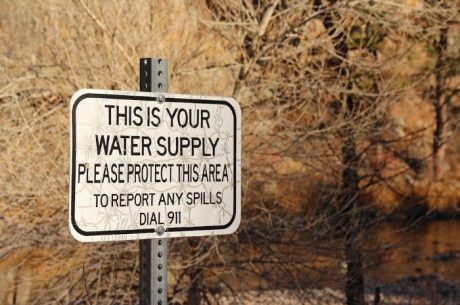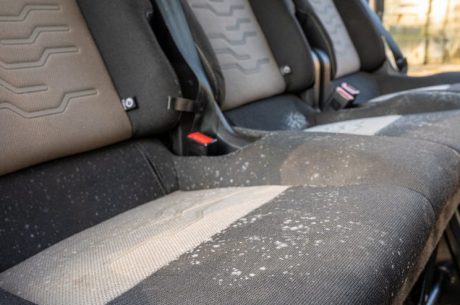A Guide for Ohio Landlords
If you are a landlord or property manager, chances are you will eventually have to handle a mold problem in an occupied rental unit. Mold complaints are common in rental properties across Ohio, where humidity and seasonal weather changes can create ideal conditions for mold growth.
How a landlord responds impacts tenant trust, legal compliance, and property maintenance. Delayed action or poor communication can worsen the problem and increase risks. Fortunately, most mold issues can be resolved with prompt, professional intervention.
This guide outlines how landlords and property managers can effectively handle mold complaints, educate tenants without alarming them, and ensure proper remediation, protecting rental properties and landlord-tenant relationships.
Key Takeaways for Landlords and Property Managers
- Stay calm and professional—tenants take cues from how you respond.
- Use neutral, solution-focused language—avoid alarmist terms.
- Educate tenants about mold to prevent fear and misinformation.
- Document everything to reduce legal risk while maintaining tenant trust.
- Ensure timely remediation and keep communication open.
- Choose mold remediation companies with IICRC-certified professionals.
Understanding Tenant Fears About Mold
When tenants find mold in their rental home, it can be stressful and even overwhelming. Worries about health risks, property damage, and legal issues can quickly escalate, especially with so much misinformation out there.
As a landlord, responding calmly and factually can ease concerns, build trust, and prevent unnecessary panic. Taking the proper steps immediately can help protect your tenants and your property.
Why Mold Causes Panic
- Media Hype & Misinformation: Sensationalized reports about “toxic black mold” have created widespread fear.
- Health Concerns: Some tenants worry about respiratory issues, allergies, or long-term exposure, especially if they have children, elderly family members, or preexisting conditions like asthma.
- Property & Lease Worries: Tenants may fear mold could damage their belongings, affect their security deposit, or lead to eviction if they’re blamed for poor maintenance.
- Legal & Relocation Concerns: Some tenants believe mold automatically entitles them to relocation, rent reduction, or legal action—even before an inspection confirms the issue.
What Landlords Should Know About Mold
Mold is a natural part of the environment, both indoors and outdoors. While often linked to health concerns and property damage, it’s usually manageable when handled properly. Understanding mold growth, risks, and prevention helps landlords respond confidently.
Mold Is Common and Manageable
Mold spores exist everywhere and are generally harmless in small amounts. However, mold can spread quickly with the right conditions.
Moisture Control Prevents Mold Growth
Mold grows in damp, high-humidity conditions, often caused by:
- Leaky roofs, plumbing leaks, or HVAC system issues, especially above drop ceilings.
- Poor ventilation in bathrooms, kitchens, and basements
- High indoor humidity from cooking, showering or drying clothes indoors
- Flooding or water intrusion
Preventing mold is always the best-case scenario because it helps avoid tenant concerns, costly damage and potential health risks. To keep your units mold-free:
- Conduct regular HVAC maintenance
- Keep humidity levels between 30-50%
- Improve ventilation with exhaust fans
- Use a dehumidifier in humid spaces
- Routinely inspect plumbing to detect leaks
- Educate tenants on preventing mold (for example, using exhaust fans, avoiding excessive indoor drying of clothes, and reporting leaks immediately)
Staying proactive helps you avoid the hassle of mold remediation, but if you suspect mold, act quickly to prevent it from spreading.
Mold Health Risks
Being exposed to mold affects people differently based on health, mold type, and exposure level. While some may have no symptoms, others can develop respiratory issues or allergic reactions.
It’s important to note that, according to the EPA, all molds can potentially cause health effects, primarily through inhaling spores.
High-risk groups may be especially at risk from mold exposure. These include immunocompromised individuals (such as those undergoing chemotherapy or with autoimmune disorders), people with asthma, allergies, or lung conditions, and infants, young children, and older people. Risks increase with prolonged exposure, even in otherwise healthy adults.
See more about the Signs and Symptoms of Mold Exposure.
Black-Colored Mold Is Not Always “Toxic Black Mold”
Many molds appear black, but color alone does not indicate toxicity. The term “black mold” often refers to Stachybotrys chartarum, which may produce toxins under certain conditions. However, more controlled studies are needed to determine the role of black mold in causing severe issues.
A Note on Mold Testing
It’s impossible to determine mold type by appearance alone. If mold is visible, mold tests are often not needed since effective remediation will mitigate all kinds of mold. Additionally, “there are no EPA or Federal standards for airborne concentrations of mold or mold spores”, says the EPA.
However, you may wish to consider testing when:
- Legal disputes arise between landlords and tenants.
- When a tenant experiences persistent health issues that may be related to mold exposure.
- When determining the extent of hidden mold growth in HVAC systems or behind walls.
- When insurance companies require proof of contamination for claims.
- For more, see the EPA information on Mold Testing or Sampling.
For landlords, effective remediation focuses on moisture control and proper cleanup—rather than speculation.
Are Ohio Landlords Required to Clean Up Mold?
Yes, landlords in Ohio must provide rental units that are safe and suitable for living under the implied warranty of habitability. While no specific federal or Ohio laws directly address landlord responsibilities regarding mold in rental properties, landlords may still be held responsible if mold results from poor maintenance or unresolved water damage.
For example, the legal resource site NOLO cites a mold case from Louisville, OH, in which tenants successfully sued their landlord for mold damage caused by a water issue. This case highlights how tenants may have legal recourse if a landlord fails to address conditions that lead to growing mold.
What if the Mold Damage is Tenant-caused?
Returning to the livability warranty, landlords are still required to correct issues, even if the tenant caused the damage. However, in some cases, property owners can recover damages.
If you are unsure who is liable for damage costs, please consult your legal professional.
How to Effectively Communicate About Mold
When a tenant comes to you with a mold issue, straightforward, professional communication helps prevent misunderstandings, reassures tenants, and reduces legal risk.
- Stay Calm & Professional
Acknowledge tenant concerns without overreacting or making assumptions. Responding in writing ensures clarity and protects both parties. If a verbal discussion occurs, follow up with a written summary. - Avoid Alarmist Terms
Don’t use words like “hazardous,” “toxic,” or “dangerous” unless a qualified professional has confirmed the mold type. Instead, keep the focus on solutions. - Acknowledge Health Concerns Without Assuming Liability
- If tenants mention health issues, avoid stating that mold is the cause. Instead, advise them to consult a medical professional.
Talking with Tenants About Mold Without Causing Panic
Providing clear, fact-based information helps avoid unnecessary tenant fear and overreaction.
- Explain What Causes Mold Growth
Mold is natural but thrives in humid environments. Proper ventilation and moisture control help hinder its growth. Common causes include leaks, humidity, and poor airflow. - Reassure Tenants That Mold Issues Are Fixable
- A small amount of mold is a common maintenance issue, not a disaster. Most cases can be cleaned safely without extreme measures.
Steps to Take When a Tenant Reports Mold
1. Respond Promptly to Show You Take It Seriously
- Acknowledge the complaint promptly (generally within 24 hours) to reassure the tenant that the issue is being addressed.
- Schedule an inspection within a reasonable timeframe.
2. Conduct a Professional & Thorough Inspection
- Inspect the affected area for mold, moisture issues, or leaks.
- Document findings with photos and written notes.
- Communicate the next steps, explaining necessary repairs and whether professional remediation is needed.
3. Remediate Efficiently, Keep the Tenant Informed
If mold cleaning or professional remediation is required, explain the process clearly and set realistic expectations.
Example (written update to tenant):”Our inspection found mold growth in your unit due to a leak. We repaired the leak on {date}. A professional remediation team has been scheduled to address the mold in your unit at {time and date}. The team will follow industry-standard protocols to ensure proper removal.”
4. Provide Documentation & Follow-Up
- Share a summary of the issue and remediation steps. Also, provide mold prevention tips.
- Maintain open communication to reassure tenants that the problem has been fully addressed.
Commercial Mold Removal for Your Rental Property
When mold remediation is necessary, hiring a certified company is essential. While Ohio has no statewide mold certification requirements, some cities or jurisdictions may have their own regulations. (Dayton & Montgomery County do not.) Landlords should check with their local housing departments to confirm any specific requirements.
To ensure quality service, choose specialists with nationally recognized credentials, such as IICRC (Institute of Inspection, Cleaning, and Restoration Certification) or ACAC (American Council for Accredited Certification).
Why Choose PuroClean Emergency Services
If you have mold in your rental property, working with the professionals at PuroClean Emergency Services ensures effective remediation and peace of mind.
We offer:
- Comprehensive Mold Cleanup – Using advanced technology to identify and remove mold while preventing regrowth.
- Industry-Certified Technicians – IICRC-trained, screened, and insured professionals.
- Clear & Ongoing Communication – Landlords, property managers, and insurance agents receive updates throughout the process.
- Fast, 24/7 Response Across Southwest Ohio – Serving Dayton, Cincinnati, Kettering, Oakwood, Piqua, Centerville, Mason, Eaton, Springfield, Beavercreek, West Chester, and nearby areas.
Protect your rental property with commercial mold remediation for landlords and property managers. Call PuroClean Emergency Services for a fast, professional response. (937) 401-9700.
Sources
- EPA: Mold Remediation in Schools and Commercial Buildings Guide: Appendix B
- EPA: Mold Testing or Sampling
- EPA: Mold Course Chapter 3
- Dayton & Montgomery County: About Mold
- NOLO: Ohio Rules Regarding Mold in Rental Properties




 PuroClean Emergency Services
PuroClean Emergency Services